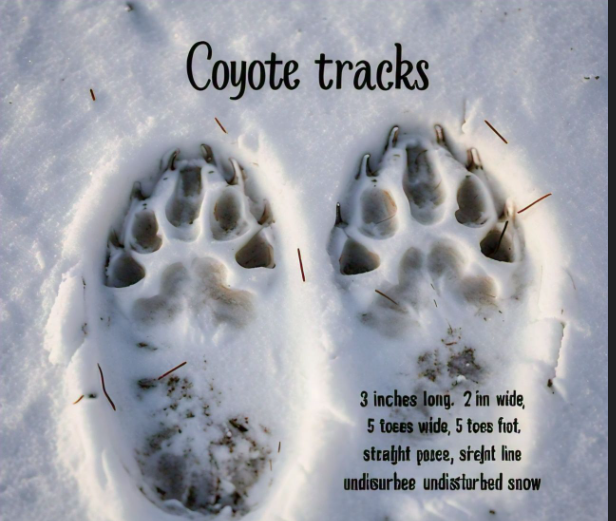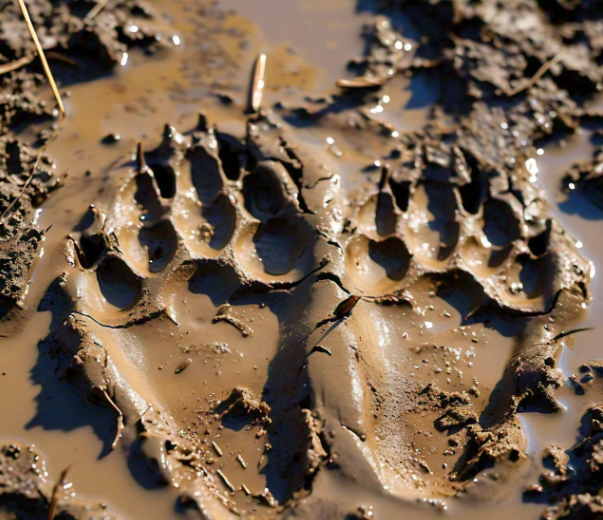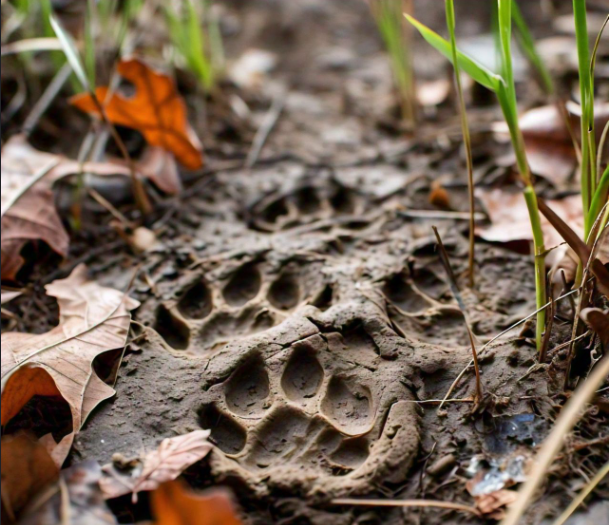Coyote tracks are a great way to learn about these fascinating creatures and their habits. If you’re out in the wild, spotting coyote tracks can help you understand where they’ve been and what they’ve been doing. These tracks are different from other animals, and it’s important to know how to identify them correctly.
Coyote tracks are usually smaller and more oval-shaped than those of dogs or wolves. The front paws of a coyote often point inward, and their tracks show four toes, along with a clear imprint of their claws. By recognizing coyote tracks, you can get clues about where they live, where they’re hunting, and even what they might be hunting.
What Are Coyote Tracks? A Simple Guide for Beginners
Coyote tracks are the footprints left behind by coyotes as they travel through different areas. These tracks are an important clue to understanding where coyotes go and what they are doing. The tracks can be found in a variety of places, like forests, grasslands, or even near houses in rural areas.
The key to identifying coyote tracks is their shape. They are smaller than wolf tracks but larger than those of a domestic dog. Coyote tracks often show four toes, and their claws can be visible depending on the ground surface. Understanding the basics of these tracks will help you spot them easily when you’re out exploring nature.
How to Spot Coyote Tracks in the Wild
Finding coyote tracks in the wild can be exciting, but knowing where to look is important. Coyotes are found in many parts of North America, and their tracks can be seen on dirt paths, snow, or even in the mud. To start, look for areas where coyotes are likely to travel, such as near water sources, along trails, or in forests.
When you spot a track, notice its shape. Coyote tracks are typically smaller and more oval-shaped compared to dog tracks. Their tracks may show four toes, and in some cases, you might see their claws. Coyotes often walk in a straight line, so their tracks will appear in a pattern that helps identify them.
Why Are Coyote Tracks Different from Dog Tracks?
It can be tricky to tell the difference between coyote tracks and dog tracks, but there are a few key details that set them apart. First, coyote tracks are usually more oval in shape compared to a dog’s rounder tracks. The size of the tracks also differs, with coyote tracks being smaller than the average dog’s prints.
One big difference is that coyote tracks often show a more pronounced arch. Their toes can point inward towards each other, which is something you may not see in dog tracks. Additionally, coyotes have thinner, more delicate tracks compared to the wider, deeper prints made by dogs. Knowing these differences will help you accurately identify coyote tracks in the wild.
The Shape and Size of Coyote Tracks Explained

Coyote tracks come in different shapes and sizes depending on the surface they are left on. On soft soil or snow, the tracks are usually clear and easy to spot. In general, coyote tracks are smaller than wolf tracks but larger than dog tracks. These tracks are typically about 2 to 3 inches in length, though they can vary depending on the size of the coyote.
- Front tracks: Coyote front tracks are slightly larger than their hind tracks. They are oval and have apparent hook marks now and again.
- Hind tracks: The hind tracks are more round and smaller than the front ones. You can often see the difference when comparing the two.
Understanding Coyote Tracks in Snow: What to Look For
In the winter, it’s easier to spot coyote tracks in the snow. The cold weather leaves clear imprints, and the snow helps preserve the details of the track. When looking for coyote tracks in the snow, pay attention to the spacing between the tracks. Coyotes usually walk in a direct line, which makes their tracks easy to follow.
One important feature to notice in snow is how the front toes of the coyote track turn inward. This gives the track a distinct shape that sets it apart from dog and wolf tracks. The clear outline of the claws can also help you identify coyote tracks, especially if the snow is soft enough to show fine details.
How to Identify Coyote Tracks in Mud

Mud is another surface where coyote tracks can be found. Just like snow, mud helps preserve the details of the track. To identify coyote tracks in mud, first look for the smaller, oval shape with four toes. The claws might be visible, but not always, especially if the mud is thick.
- Track shape: Coyote tracks in mud will be smaller and more oval-shaped than dog tracks.
- Toe imprint: The toes of a coyote will often point inward, creating a narrow, straight pattern.
By paying close attention to these characteristics, you can confidently identify coyote tracks in the mud.
Conclusion
Coyote tracks are a great way to learn more about these wild animals and their behavior. By paying attention to their track shapes and sizes, you can easily spot where they have been. Whether you’re walking through the woods, snow, or even mud, knowing how to identify coyote tracks helps you understand their movements and what they might be doing.
If you’re interested in wildlife, tracking coyotes can be a fun and educational activity. The more you look for and study their tracks, the better you’ll become at recognizing them. So next time you’re outdoors, keep an eye on the ground—you might just spot some coyote tracks and discover more about these amazing animals!


